On the chopping block
Debate over AISD’s 2019 budget and debt management leave no recomendation off of the table
December 28, 2018
Alejandra Estrada is tired of having to shove her first graders into supply closets during active shooter drills. For the students at Williams Elementary where Estrada teaches, there is no hiding under desks or sitting in corners because their outdated, open concept school building has no walls.
“The first-grade class next to me has to come into my classroom and go into one of my closets while I shove the rest of my kids into my tiny hall office,” said Estrada, standing outside of the Nov. 26 AISD board meeting to protest her schools lack of funding before the Board of Trustees solidifies the 2019 budget. “It’s happening all over the school, and it’s just not safe.”
With debate over the budget in full swing, all parts of the AISD community have come together to defend what is important to them, and what is on the chopping block in trying to alleviate the district’s well-publicized $30 million debt.
For most of the protesters rallying against the debated budget, it’s the prospect of changing to a seven-out-of-eight class period work day for teachers, increased class sizes or the consolidation or outright closing of under-attended schools.
For McCallum kids and parents, it is the consideration that the fine arts programs might see reduced or eliminated funding.
For Estrada and her fellow teachers at Williams Elementary, safety is the main concern.
AISD has already cut the funding they need to employ cafeteria monitors to make sure their pre-K and elementary students are safe during lunch and at recess; they need the district’s help in paying for these important support jobs and helping to make their school a more secure and controlled environment.
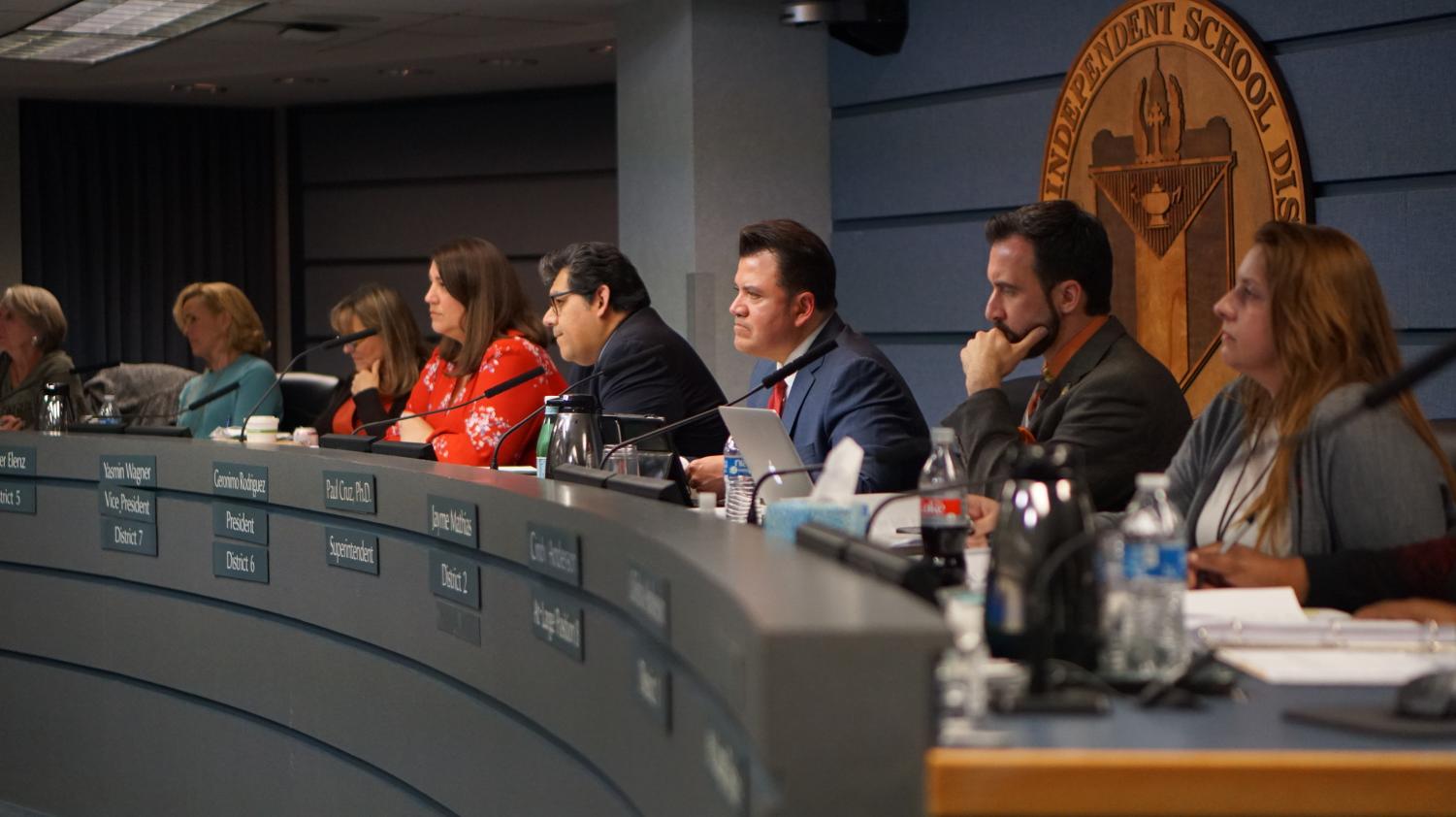
At the Austin ISD Board of Trustees meeting on Nov. 26, board members (from left to right), Ann Teich, Kristin Ashy, Amber Elenz, vice president Yasmin Wagner, president Geronimo M. Rodriguez Jr., Superintendent Paul Cruz, Jayme Mathias, Cindy Anderson, and LaTisha Anderson (not pictured) listen to community members as they discuss district problems and policies, propose ideas, and give thanks to outgoing board members, former secretary Julie Cowan and Edmund T. Gordon. Photo by Elisha Scott.
So how did we get here?
According to the Financial Management section of the district’s website, “Austin ISD has earned the highest ratings for budget management from Moody’s Investors Service, Standard & Poor’s and Fitch Ratings. AISD also carries the highest bond and state financial accountability ratings that school districts can earn in the state of Texas.”
So how exactly did AISD get into this financial hole?
One culprit, a prime suspect if you will, is recapture, the state school finance system that takes the revenue of districts with high property tax revenues and redistributes it to schools with low property tax revenues. Since 2015, AISD recapture payments have more than tripled. It is estimated that in fiscal year 2018, 55 percent of revenue will be sent to the state for redistribution, and that more than $699 million of local tax revenue will be sent to the state in recapture in fiscal year 2019.
Recapture’s purpose is simple enough: to provide equity and equal funding to all school districts, but the recapture system doesn’t always have a way to gauge the school district—only the property taxes it receives.
Since Austin’s property taxes continue to rise and rise, AISD has had to send away record amounts of its primary revenue to the state of Texas, more than any other school district in the state. The “Robin Hood” tax, however, doesn’t go directly to school districts in need. Instead, the money is simply dropped into a general pot, along with lottery revenue, sales taxes and other small revenue streams, making the millions of dollars first intended for the school district nearly impossible to track.
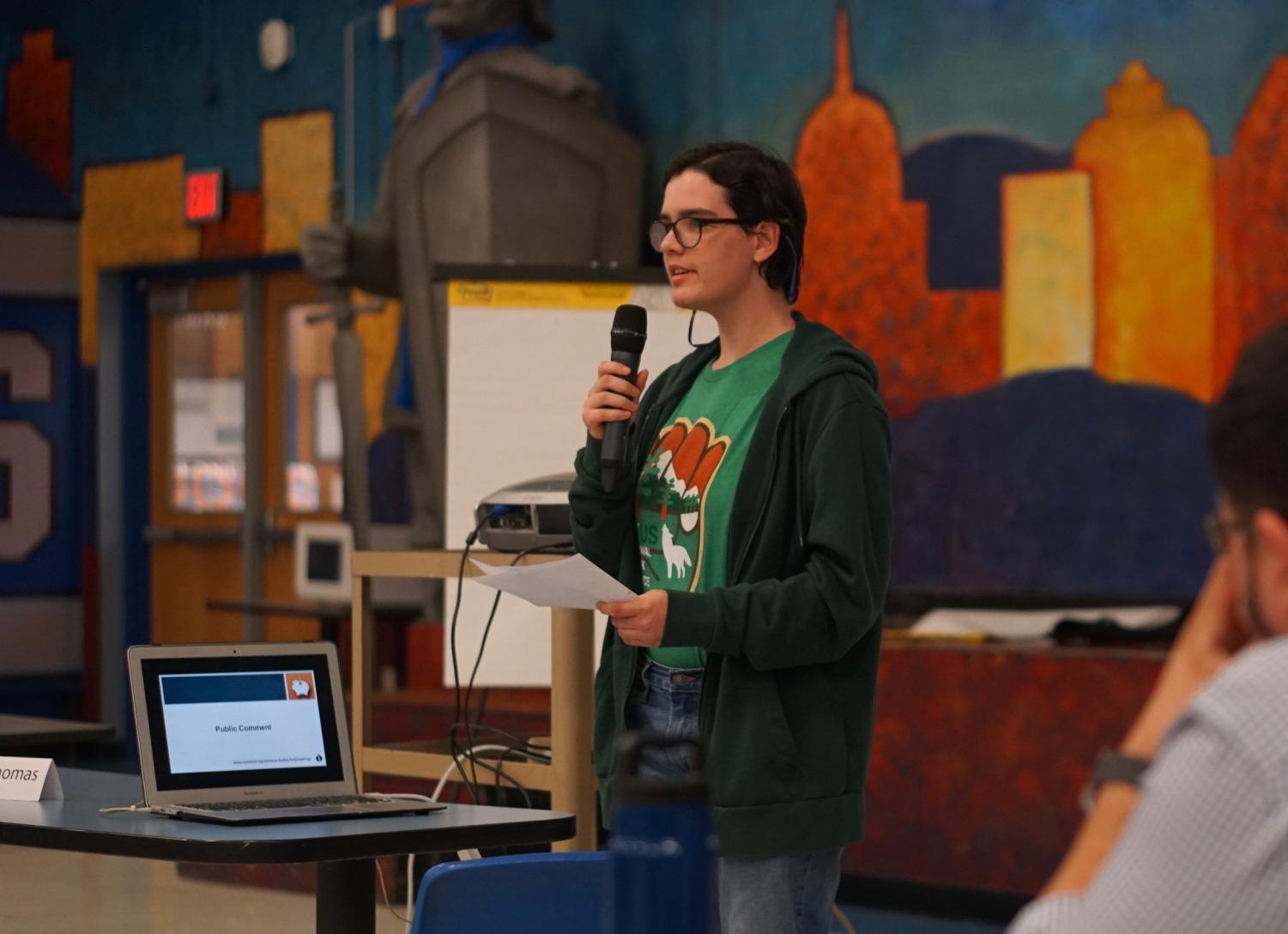
Junior Jean Patton was the first speaker during the public comment portion of the budget stabilization task force meeting in the McCallum cafeteria on Nov. 7. Patton urged the committee to maintain funding for magnet programs throughout the district and to keep the current AB schedule for high schools without shortening class periods or reducing teacher planning time. Patton also said that magnet programs enable students throughout the district to have access to specialized programs and that those same students improve campus life by bringing diversity to the student body. Photo by Bella Russo.
The attendance issue
Since 2012, the district has lost around 6,200 students and it is projected that enrollment will drop another 4,266 students in the next seven years. Because the district receives funding from the state based on its attendance numbers, the dwindling number of students in AISD schools exacerbates an already hefty deficit.
The skyrocketing property tax revenues of Austin have made it both a target for record amounts of recapture and have been a reason that so many families are being pushed out of Austin, leaving AISD caught in a vicious cycle.
Initiatives like AISD’s fine arts programs and all-day pre-K’s have faced scrutiny as they take up a large chunk of district funds and aren’t required by the state. The district has also been forced to explore consolidating and closing schools with low attendance rates.
Cutting programs or relocating campuses which are integral to Austin communities, however, might cause attendance in AISD schools to drop further, which would further decrease the attendance revenue the district receives from the state.
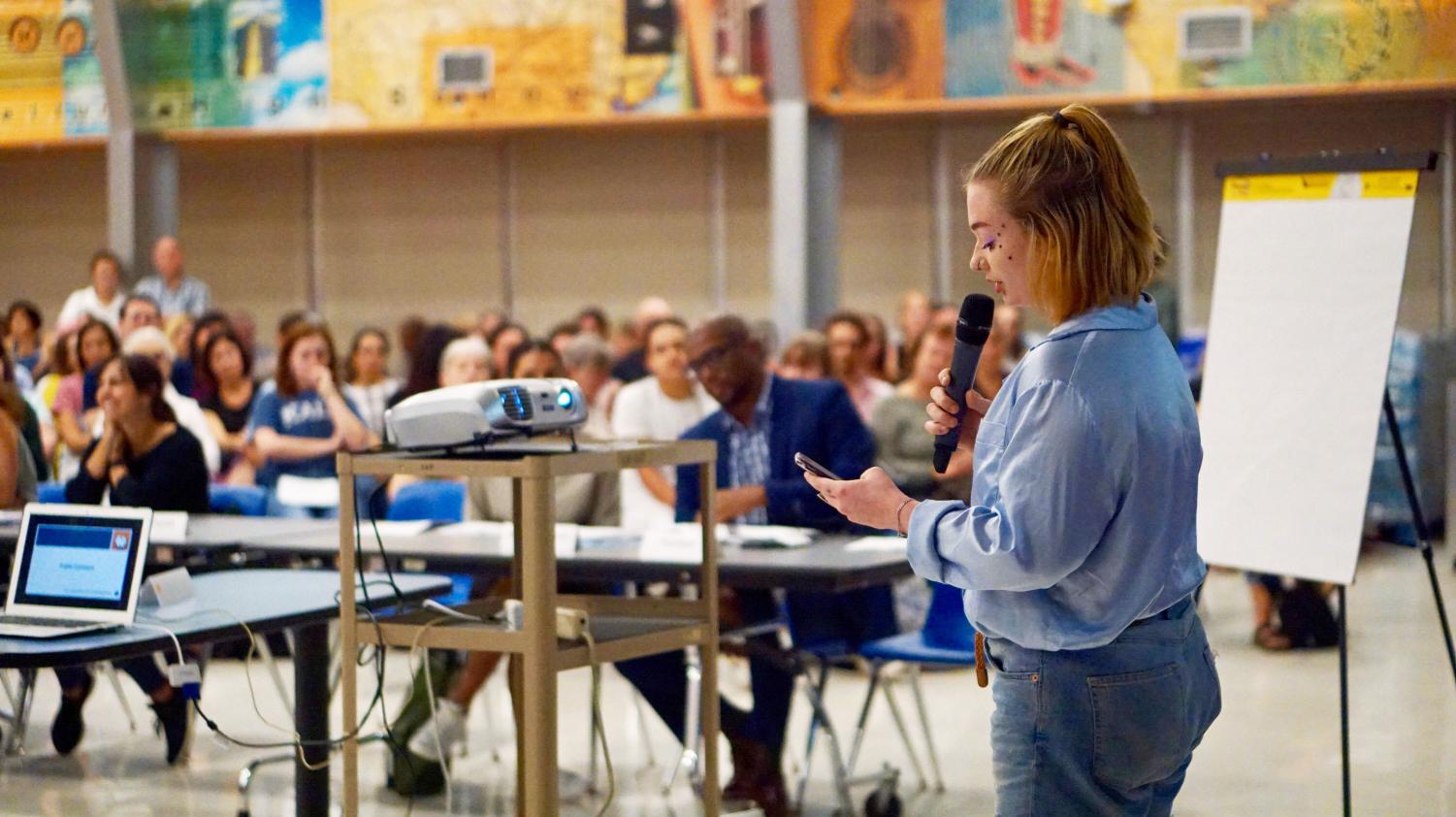
McCallum senior Emily Freeman presents a two-minute speech in defense of McCallum’s fine arts programs to a packed cafeteria during a Budget Stabilization Task Force meeting. Freeman was one of four speakers who presented public comments at the meeting. Photo by Bella Russo.
Concerns over fine arts
Once word began to spread about possible budget cuts, students began to worry about how the budget changes might affect the choice program at McCallum.
Rumors began spreading about possible major funding cuts, as fine arts is not mandated by state or federal law. One viral picture even claimed that the Academy would be eliminated. Though this proved untrue, students still have advocated for the importance of the Academy in their lives, hoping to prevent future considered cuts.
“[Loss of funding] would have a huge impact in both positive and negative ways,” said senior technical theatre Fine Arts Academy ambassador and MFAA Royale Court Players student president Zora Moore-Thoms. “Having lots of rehearsals can make it hard to have time to do homework, especially when you’re in lots of AP classes. But you also have this huge support system that you make in the Fine Arts Academy that helps you through that kind of stuff.”
Dozens of students, parents and teachers attended the BSTF meeting at McCallum on Nov. 7. In public comment, they expressed support for fine arts and implored committee members not to look at specialized programs when deciding where to cut funding. They afterwards attended a separate meeting, where community members discussed ways to advocate for public education funding at the state legislative level.
“Art students already have to pay upwards of $75 per art class without budget cuts,” senior Fine Arts ambassador Chloe Linscomb said. “With the potential cutting of programs, I feel like McCallum [wouldn’t] be that special school anymore with all the unique classes we offer.”
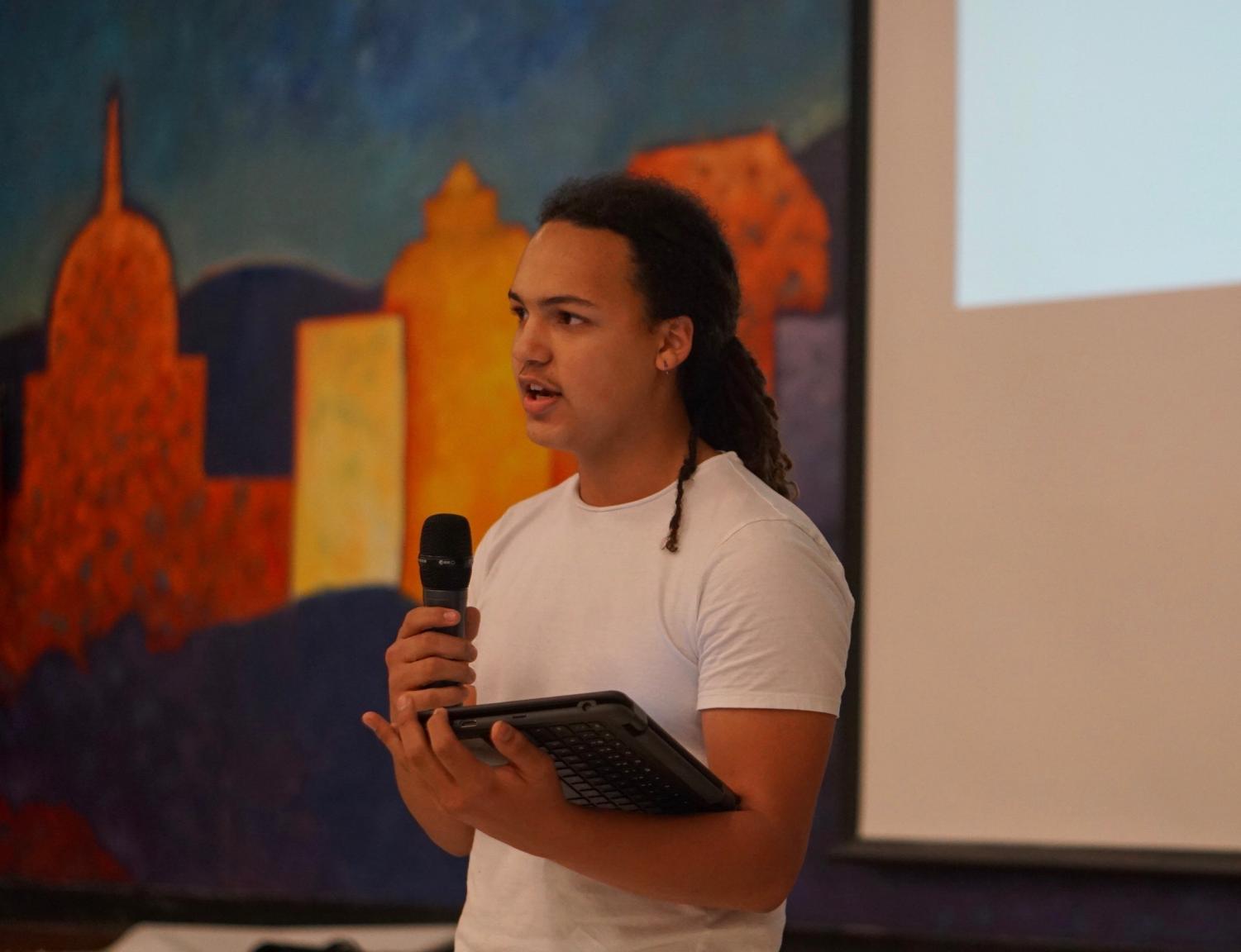
Sophomore Denali Jah told the budget task force that he faced a difficult decision in choosing a high school when he moved to Austin before his freshman year. The Fine Arts Academy led him to McCallum. He urged the committee to reject cuts to the program that has enabled him to qualify for a national orchestra competition.. “The arts are very important to me,” Jah said. “They’ve been a connector between me and my peers and the people I care about. Reducing funding inside any of these programs would be detrimental to them.” Photo by Bella Russo.
Motivation for students
Specialized program advocates have argued that it is wise to invest money in programs like fine arts, because it draws more families to public schools (rather than charter or private), which in term generates more funding through attendance.
The argument is that students feel more compelled to attend school regularly when they have an activity or class that they are passionate about or one where they can advance their understanding or proficiency in the discipline they most care about.
“Since being the Fine Arts Academy, I’ve been able to receive a scholarship for the School of Visual Arts Pre-College Program, get into the People’s Gallery art show, go to state for art competitions like VASE, and win silver at Scholastic Art and Writing,” Linscomb said. “The academy has also taught me how to get my work out there. I’ve been invited to shows through East Austin Studio Tour that showcase art all over East Austin. … Without the support from my facility, I feel like I wouldn’t have been able to succeed and have all of these opportunities.”
High attendance rates allow for the district to receive more state revenue. The attendance policy has become stricter in the 2018-2019 school year in an attempt to raise attendance rates and reduce truancy throughout the district. Students must attend class for 90 percent of time it is offered in order to receive credit of the class.
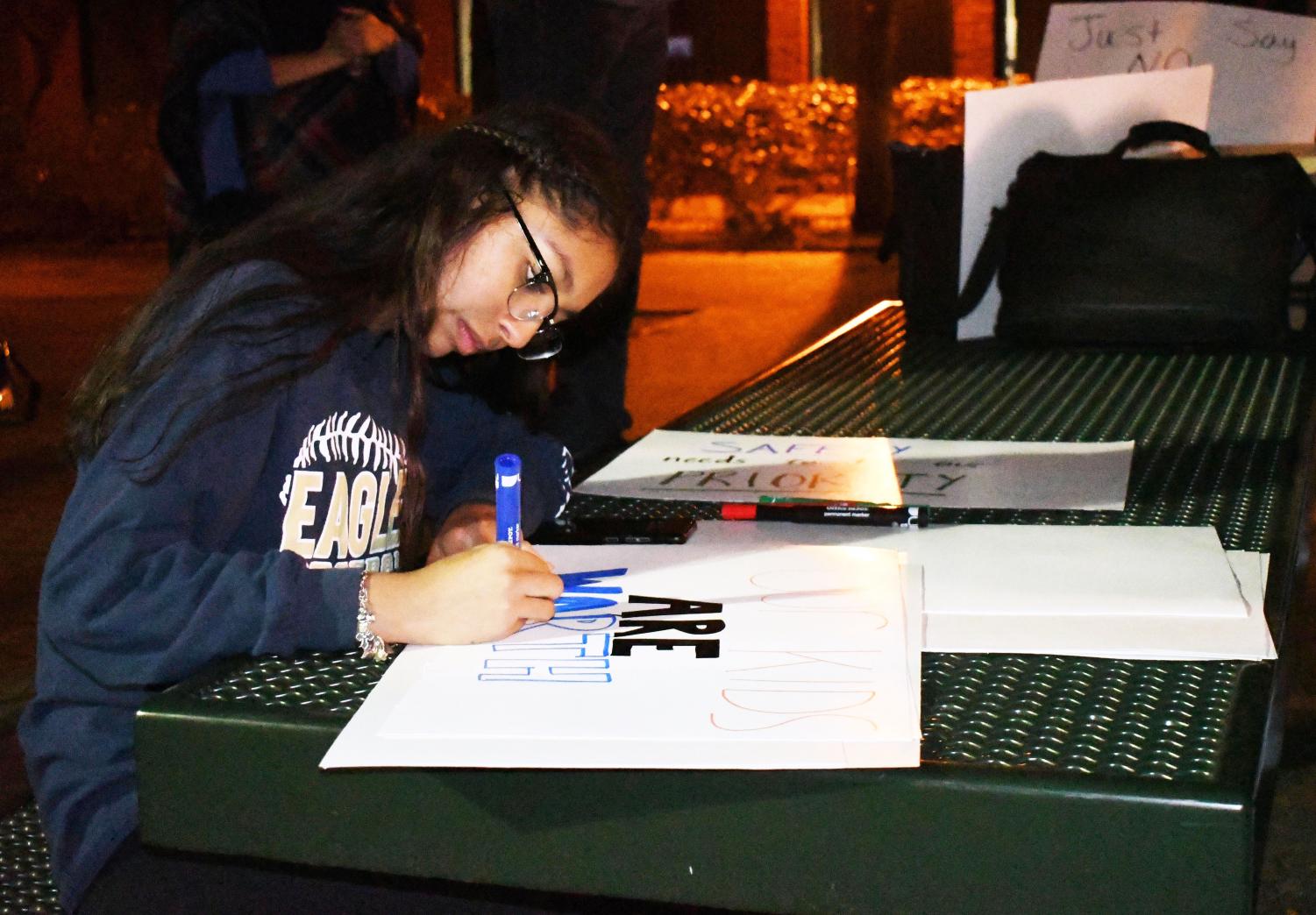
Akins freshman Isabella Vasques makes signs against increasing class sizes to reduce the district’s $30 million debt. Protester held up the signs during the public comment period of the Nov. 26 Board of Trustees meeting. Photo by Bella Russo.
Increasing class size
Although the prospect of increasing class sizes isn’t particularly appealing to students or to teachers, it could potentially eliminate a larger portion of the multi-million dollar deficit. Increasing class sizes by two students per class, upping the state limit from 22 to 24 students per class in pre-K and elementary schools and raising the limit from 29 to 31 for middle and high schools, could eliminate over a hundred classrooms.
If approved by the school board, this increase is projected to save the district $6.4 million for the 2019 school year. AISD also assures that this increase would not lead to an escalation in teacher layoffs, claiming that the number of teachers that move out of the district each year would compensate for any eliminated positions. Michelle Cavazos, the district School Leadership Chief Officer argues that increasing class sizes may benefit students by supporting good teachers, claiming that a teacher who can engage a class will reach her students effectively no matter the class size. Many AISD teachers, students, and parents do not agree.
“My little sister is in elementary school and there are so many kids in her class that she’s not getting the education that she needs,” said Isabella Vasquez, a freshman at Akins, who protested class size increase at the AISD board meeting and public comment session on Nov. 26.
Ken Zarifis, the president of Education Austin, the teacher’s union that advocates for student and teacher rights, agrees with her.
“We want to know [what] is best for kids, and we don’t think increasing class sizes is best for kids. “ Zarifis said. Zarifis urges AISD to seek solutions beyond the classroom: “Don’t look at the classroom to cut away; look at administration, look at all the ways you could save money, but don’t take it away from the kids or the teachers.”
Currently, AISD’s 2019 budget is still under debate. The Budget Stabilization Task Force will make its final recommendations to the district chairs sometime in December, when the matter will shift from the task force to the Board of Trustees to make a final decision. Although no solution will be perfect to everyone, what we know for certain is that the problems that the district is facing aren’t going to go away soon, so a solution will have to be made to ensure that AISD is financially sound for the long haul.
About the videos below: Seven community speakers (videos 1 and 2) voiced opinions at the budget stabilization task force meeting held at McCallum on Nov. 7. The speakers included four Mac students and three @AustinISD parents. Later on in the evening, a parent-led meeting met in the MAC to plan activism against school- and district-wide budget cuts (videos 3 and 4). Videos by Kelsey Tasch.
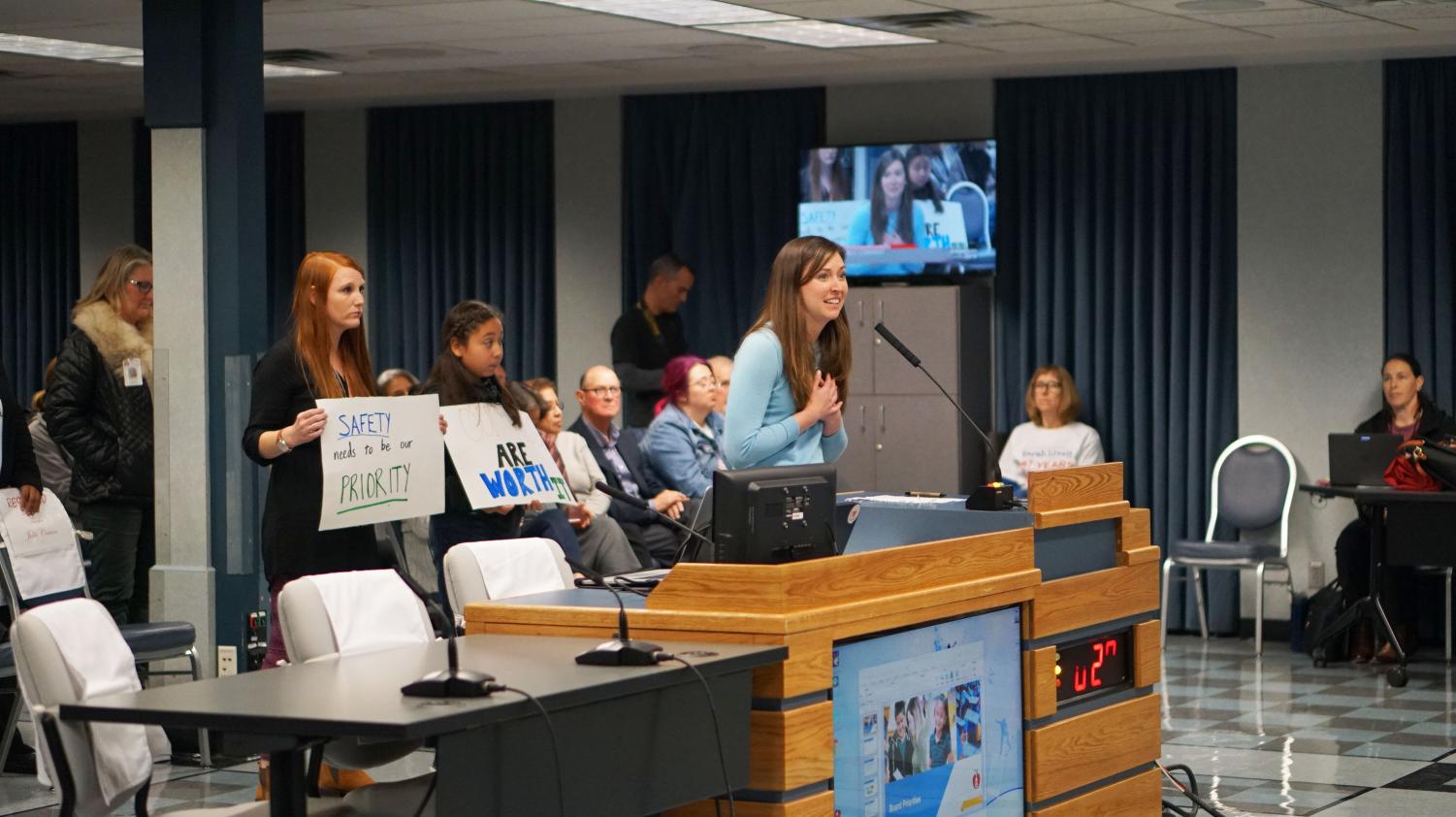
Jacob Kuhlenbeck • Jan 14, 2019 at 2:18 pm
I think the article was very informative and that it really will spread the message to speak up for the students and teachers.
Dashel Beckett • Jan 11, 2019 at 10:38 am
I’m glad that people are talking about this! If we don’t discuss this no one will know!